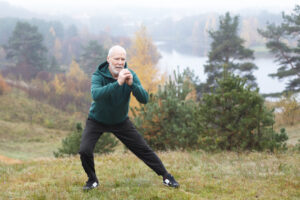Having ongoing pain is at the root of many clinical conditions that occur in any part of your body. Ongoing pain can develop after a number of injuries, including sprains, fractures, and contusions. It can also result from surgery, stroke, or nerve lesions.
Sometimes the cause of your pain cannot be determined. You might injure yourself at work or home. The location of pain also varies from person to person. Although ongoing pain often appears in the extremities, it can occur anywhere in your body.
Physical therapy for ongoing pain is designed to relieve you of your pain symptoms wherever they appear.
At Dosher PT, our physical therapists are trained to relieve your pain symptoms and give you a greater range of motion in the affected area.
Ongoing Pain and Physical Therapy
Suffering from ongoing pain all over your body means that you have unpleasant sensations in your body that last for three months or longer. Many who suffer from ongoing pain think they have a disease, although this is not typically the case.
Unlike acute pain, ongoing pain is not sending you a warning that you are injured. Instead, the pain centers in your brain have changed, consistently sending you signals that your body is in distress. With ongoing pain in certain regions of your body, your brain actually heightens your experience of pain.
Here’s how and why the brain changes in consistent pain sufferers:
- When you are injured or experience a painful disease, your nerves send information to your brain to take action.
- Your brain analyzes your pain to determine if action needs to be taken.
- But, when pain becomes ongoing and ongoing, your brain is constantly on high alert, becoming more sensitive to the pain.
- Your cells become more sensitive as well. Changes to the brain and central nervous system actually make the pain worse!
- Even when the injury heals (i.e. you no longer have damaged tissue), your brain is programmed to respond as if you have an injury. Even thinking about your pain can trigger a response in the body.
Essentially ongoing pain is your brain tricking you into experiencing pain. This does not mean the pain is “all in your head.” It’s simply that your central nervous system and brain are sending signals that are no longer useful because your injury has gone away.
How Physical Therapy Helps in the Treatment of Ongoing Pain
Physical therapists play a key role in addressing ongoing pain, helping you with pain management and greatly improving your quality of life. Here are some of the ways a physical therapist from Dosher PT can help.
Education: Your physical therapist will give you useful information on how to manage your pain on a daily basis. Our goal is to help you get back to performing your normal daily activities again.
Strength and Flexibility Exercises: Strength and flexibility exercises lessen discomfort and ongoing pain. Your Dosher PT will design a program of gradually increasing exercises that reduce the pain in the affected area. Graded exercise programs tell your brain that you are capable of movement without pain.
Manual Therapy: Your physical therapist may gently manipulate tight joints and soft tissues. Manual therapy has a good success rate in increasing your range of motion, repairing damaged tissue, and reducing pain.
Posture Awareness: Working with you to be aware of your posture helps reduce pain in your daily life. Learning to use your body more efficiently and safely when performing activities or simply resting helps restore your body’s movement.
Physical Therapy for Ongoing Back Pain
We bring up ongoing back pain because it is so prevalent. It is estimated that 16 million Americans (or 8% of all adults) suffer from ongoing back pain. Physical therapy for lower back pain—the most common type of this condition—usually relies on guided therapeutic exercises to strengthen the core muscles of the lower back, as well as any spine or joint issues.
The goals of physical therapy for back pain are to:
- Decrease and reduce pain in the back and legs
- Improve your ability to carry out normal daily activities
- Enhance the flexibility of your spine and range of motion
Effective Physical Therapy Treatments for Ongoing Back Pain
Effective physical therapy treatments for ongoing back pain can be placed under four general categories of exercises under the guidance of a physical therapist.
- Core Strengthening Exercises
What is the body’s core? Although you hear it referred to often, your body’s core muscles include the stomach, the spine and the buttocks, the area below your lungs, and your hip and pelvis. Having a weak core is bad because it causes excess pressure on your spine and legs, which produces greater back pain. Core-strengthening exercises alleviate lower back pain by building these muscles.
- Lumbar Exercises
You need strong legs and hips to have a strong spine. Walking, bending down to pick things up, and being able to twist your body are essential to your daily activities. Stretching exercises that strengthen your leg muscles improve your coordination and keep pressure off your lower back and spine by transferring it to other areas of the body.
- Cardiovascular Exercises
Aerobic activity is great for the heart and the spine and lower back. When you engage in light aerobic activities, you improve your circulation, sending oxygen to cells all over your body. This oxygen repairs muscle tissue, which can help to relieve ongoing back pain.
- Posture Exercises
As we mentioned above, poor posture can produce or worsen ongoing pain. When you learn better posture (both standing and sitting), you maintain a better balance between your muscle groups. Posture correction exercises stretch and strengthen your back muscles.
Dosher Physical Therapy for the Treatment of Ongoing Pain
At Dosher Physical Therapy, we specialize in the treatment of pain for those suffering with ongoing back and neck pain, and much more. We offer the latest and most innovative physical therapy treatments with compassionate care.






